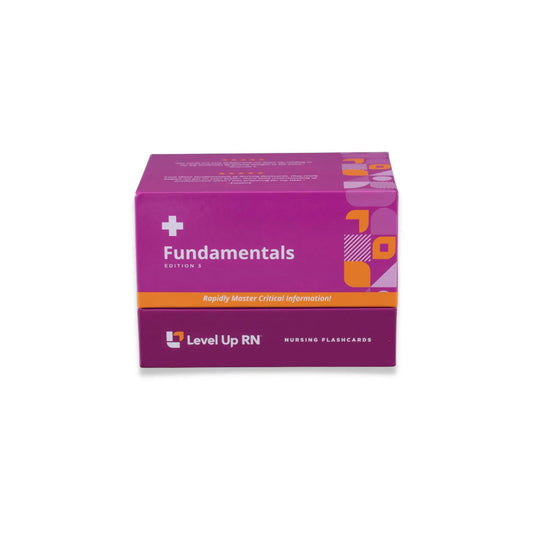Fundamentals - Community Health, part 5: Subsidized Health Insurance
Updated: Ellis ParkerThe differences between Medicare and Medicaid, including the four parts of Medicare and what each of them covers.
Full Transcript: Fundamentals - Community Health, part 5: Subsidized Health Insurance
Full Transcript: Fundamentals - Community Health, part 5: Subsidized Health Insurance
Hi, I'm Ellis with Level Up RN. And this one is going to be pretty short because I'm just going to be chatting about subsidized health insurance. This card is found in our community health section of our fundamentals of nursing card deck. If you have that deck, grab this card because there is quite a bit of text on the back. If you don't have our card decks, check us out at leveluprn.com. After I review the content, make sure you hang tight because I do have a couple of questions to check your knowledge. Subsidized health insurance in the US feels tricky at first, but there's really just the two categories, right? There's Medicare and Medicaid, so let's make sure we understand the difference between the two. Medicare is an insurance program for individuals over the age of 65. However, younger individuals can still qualify for Medicare if they have been diagnosed with certain disease processes. These include being on dialysis for any reason, which might mean they have end-stage renal disease, and amyotrophic lateral sclerosis or ALS also qualifies someone regardless of whether they're 65 or not. Medicare is broken down into four parts: part A, B, C, and D. Part A is coverage for inpatient hospital stays, skilled nursing facilities, and home health. Part B is outpatient care, medical services, and preventative care. Part C is part A and B combined through private insurance, and it can also include vision, hearing, and dental, as well as prescription drug coverage. And part D is prescription drug coverage. So our cool chicken for this card just matches up the part letters with what they do. Part A is for acute care. Part B is for basic medical coverage. Part C is for commercial insurance, and part D is drug coverage.
Medicaid does not have an age restriction on it. It is solely focused as being an assistance program for low income individuals and families based on their taxable income and family size. So a cool chicken to help you differentiate between the two is that we care for our elderly, and we give aid to the poor. And that is all the content we have for this brief video on subsidized health insurance, so let's go ahead and check your knowledge. So tell me, who qualifies for Medicare? To qualify for Medicare, someone has to be over the age of 65 or be diagnosed with particular disease processes including receiving dialysis, having end-stage renal disease, or having amyotrophic lateral sclerosis or ALS. Under which part of Medicare would preventative services fall? Preventative services fall under part B or basic medical coverage. How would an individual qualify for Medicaid? Medicaid is available for low income individuals or families based on their taxable income and their family size. Thank you so much for joining me on this discussion of subsidized health insurance. In my next video, we'll be moving into health risks across the lifespan and to family community nursing.



1 comment
HI, What about PPO, HMO Insurances? What is differences between them?